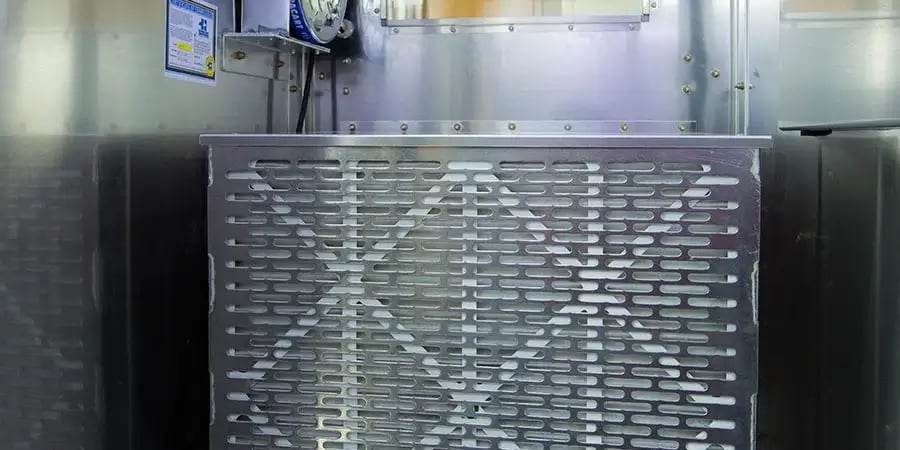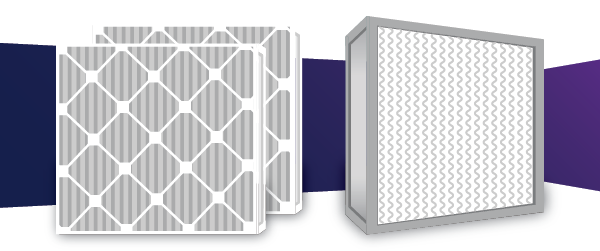Share this
What Is A Medical Grade HEPA Filter?
by HEPACART on Jun 22, 2022

Unfortunately, construction projects and sick people do not mix. Construction dust is full of harmful substances such as wood dust, silica dust, and sometimes even asbestos, mold, and lead. This cocktail of toxic debris is harmful to healthy, robust immune systems, but is especially a hazard to hospital guests who are in a weakened state. People with breathing issues, autoimmune disorders, and open wounds are particularly susceptible to the effects of contaminants from construction and renovation projects. In fact, such dust can lead to people developing autoimmune rheumatic diseases.
This is why there are strict measures that govern healthcare facility repair and construction projects. No doubt you’re already familiar with the Infection Control Risk Assessment (ICRA) process that measures the amount of risk posed to a patient population by construction and renovation. As such, you know that people in hospitals need protection, but how much is enough? Are HEPA filters at the site of construction all that’s needed? 
Get Medical-Grade HEPA Filters
Yes, your hospital needs air filter units to clean the air. But, it’s not enough to just get an air filtration system and call it a day. Hospitals should use a medical-grade HEPA filter system to keep the highest amount of harmful contaminants, such as construction debris and infectious diseases, from spreading. Which HEPA Filters are considered “medical grade?” To answer this, let’s start with regular HEPA filters.
The U.S. Department of Energy created the acronym, HEPA, which stands for “High-Efficiency Particulate Air.” Add the word “filter” onto the end and you’ve got HEPA filter. According to the EPA, HEPA filters must remove 99.97% of allergens such as mold, bacteria, dust, pollen, and any other particles that are 0.3 microns or larger. The reason that HEPA filters can remove COVID-19 viruses from the air, which are only 0.125 microns across, is that they are rarely floating around by themselves. They hitch rides on larger particles that the HEPA filters catch.
Different HEPA Standards
You’ll see two different percentages given for what is considered “HEPA” depending on which organization is defining the standard According to the European Standard and the International Organization for Standardization (ISO), HEPA filters must catch 99.95%. Yes, this is a lower percentage than in the previous section, where we quoted 99.97%. That’s the percentage that EPA, the US Department of Energy, and the American Society of Medical Engineers (ASME) define as “HEPA.” All organizations agree that the filters must catch allergens that are 0.3 microns.

The Two Levels of HEPA Filters
Ignoring filters that use marketing terms like “HEPA-like” or “True HEPA,” let’s look at the two grades of filters that are actually HEPA Filters: H13 and H14. Make sure you analyze the filtration levels of the filters you purchase! If the filtering level is not explicitly stated, you can just about bet that the filters are not HEPA. Also, research reviews and tests of any filters you’re considering. You want to make sure that the filters are what they say they are.
H13 Filters
This grade of filter must be able to remove 99.95% of 0.3-micron particles from the air. This means that H13 filters adhere to the ISO and European Standard definition of HEPA, but not necessarily the ASME, EPA, or US DoE definition. Does this mean they’re no good? By no means! H13 filters are excellent at removing contaminants from the air. Also, remember that H13 filters must remove at least 99.95% of contaminants. There are plenty of H13 filters that will remove 99.97% of 0.3-micron particles just like the American institutions require. But, this is not the highest grade of HEPA filter…
H14 Filters
For an even higher level of filtration, H14 filters remove at least 99.995% of 0.3-micron contaminants. Now, this might not sound like much of a difference, but let’s do some math. Say there are 10,000 construction dust particles you want to filter. With European spec H13 filters, 5 particles would still get through. American spec H13 filters would allow 3 particles through. With an H14 filter, there might be 1 particle that gets through.
What are HEPA Filters Made Of?
When you buy a HEPA filter, medical-grade or otherwise, you’re getting a complex interweaving of glass or synthetic fibers. With glass fibers, the fibers might be the only acting part of the filter, but with synthetic fibers, there will be a membrane in place, too. These fibers are incredibly tightly packed. To give you an idea of how small 0.3-micron filtration is, human hair can be up to 100 microns in diameter.
What About UV Light?
While far-UV light disinfection technology is fantastic at fighting microorganisms, they’re useless in the fight against construction dust. One contaminant released by construction can be eliminated with UV disinfection: mold. Keep in mind that the most important part of your filtration system will still be the HEPA filter, but a far-UV disinfection system will help eliminate the remaining biological contaminants.
Protect Hospitals with HEPACART® and HEPAFORCE®
To ensure you’re doing everything you can to keep hospital patients safe and healthy during construction, we’ve put together the Infection Control for Facilities Managers: The Complete Guide. In it, we discuss all the ways you can contain and filter construction dust and debris. From dust containment units to filtration units, there are equipment solutions for any facility. If you have difficulty deciding on what equipment is right for you, don’t hesitate to contact us. We want your patients to be safe, too.
Resources:

